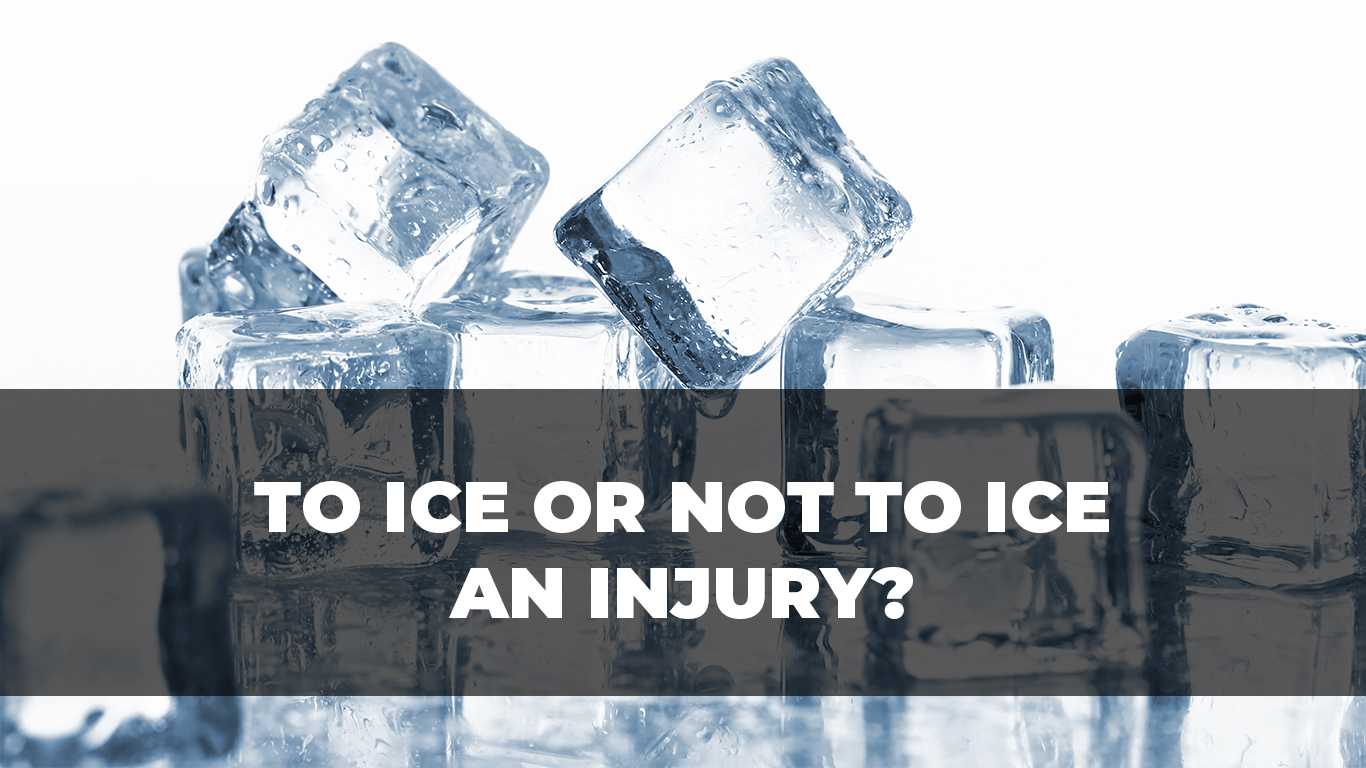To Ice Or Not To Ice An Injury?

Things are changing with respect to the use of cryotherapy in acute injuries, and the way we use ice in physiotherapy practice.
Ice is an extremely hot (or rather, cool) topic in sports medicine and acute injury rehab, and for good reason. The way we treat injuries is continually changing based on recent research. Due to this, it’s no wonder that there is confusion around whether ice is good, bad, or indifferent for injuries.
When someone rolls their ankle, most of us instinctively grab an ice pack. When we see professional athletes get injured, they’re wrapped in ice before they’ve even made it off the field. Ice appears to be an ingrained part of the acute injury management process, but does this align with the latest research?
The earliest documentation of ice as part of the acute injury management protocol dates back to 1978 when the term RICE (Rest, Ice, Compression, Elevation) was coined by Dr. GabeMirkin. His intention behind using ice was to minimize the inflammatory response in an attempt to accelerate healing. This initial protocol became deeply rooted in our culture and for 20 years we were ‘RICE-ing’ injuries before P was included for protection (PRICE). 14 years later, POLICE (Protection, Optimal Loading, Ice, Compression, Elevation) replaced PRICE.
The reason for the changes?
Research has since identified that ‘Optimal Loading’ (OL) aids recovery through cell regeneration induced by light mechanical loading in the early stages. Subsequently, Rest (R) or a lack of movement is detrimental to recovery.
But what about ice?
According to the research, ice functions as a fantastic analgesic (pain numbing agent) by lowering the skin’s temperature. The effect on underlying muscles, however, is negligible, as the muscular temperature is unaffected by topical ice administration. What we don’t know as much about now as we did in 1978 is its healing properties. Most people say ice makes injuries “feel better,” at least in the short term, anecdotally (and presumably owing to the analgesic impact). But what effect does icing an injury right away have in the medium to long term?
Dr. Mirkin accepted modifications in the research in 2014 and, like any evidence-based scientist, removed ice from his original methodology. Coaches had been following his “‘RICE’ recommendation for decades, but it now appears that both ice and full rest may actually hinder healing rather than help,” he said.
What Dr. Mirkin is referring to is the necessary benefits of the inflammation process. When we injure ourselves, our body sends signals out to our inflammatory cells (macrophages) which release the hormone Insulin-like Growth Factor (IGF-1). These cells initiate healing by killing off damaged tissue. Although when ice is applied, we may actually be preventing the body’s natural release of IGF-1 and therefore delaying the initiation of the healing process.
Ice was finally revoked in 2019 from the injury management process with the latest and most comprehensive acronym: PEACE & LOVE (Protection, Elevation, Avoid Anti-Inflammatory Drugs, Compression, Education &Load, Optimism, Vascularisation, and Exercise).
With all of this fresh information pointing to the dangers of icing injuries, one must wonder:
‘Should we still use ice if it slows recovery and only momentarily relieves pain?’
Probably not.
While some inflammation may be warranted for recovery, too much or prolonged edema (swelling) is bad news. Excessive edema applies unwanted pressure on the tissues, restricts movement, can increase pain, and decrease muscle function.
This is common in severe joint sprains (such as ankle sprains), where the edema is severe enough to limit the range of motion. Another example is quadriceps atherogenic muscle inhibition following ACL (Anterior Cruciate Ligament) surgery.
In these circumstances, ice may be a reasonable choice, as the goal is to minimize the extent of swelling rather than avoid it entirely. Muscle tears, on the other hand, tend to cause less edema, therefore ice is unlikely to help in the early stages (or at all) of injury recovery.
Many of us were taught that ice was the best thing to use in acute injury and that many still hold that belief. However, there is enough evidence today to suggest that we should move cautiously away from significant cooling, to more moderate cooling, at the most appropriate time, and using the most appropriate methods.
The use of cryotherapy for pain control can still be effective — if the primary goal is to reduce pain. However the application need not be too long — 5 to 10 minutes is often sufficient to decrease acute pain.
So for now, based on the current research, it is better to keep ice in the freezer for the most part. As we currently understand it, ice is less important than we once thought. The exception to this rule would be when injuries are severe and in circumstances where swelling will likely be the limiting factor for recovery. In these cases, ice may be beneficial in the early stages only.
What then should be our primary focus?
Encouraging people to return to movement safely again, as soon as it is practical.


Be the first to comment on this post